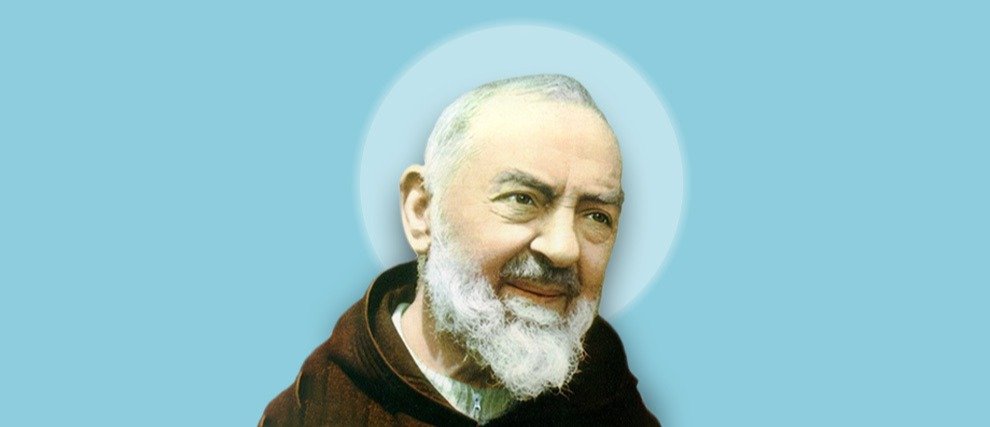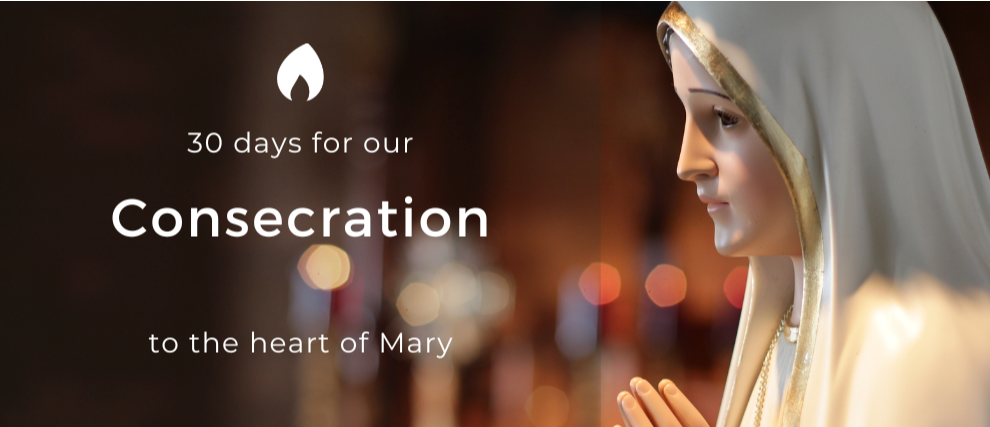Padre Pio
Biography of Padre Pio
Francesco Forgione was born on May 25, 1887 in Pietrelcina, Italy. He grew up in a very pious family and from childhood, received special grace. Particularly pious and lonely, he preferred the company of his guardian angel to that of other children. Satan attacked him when he was very young. These fierce fights against Satan would continue for the rest of his life. The Virgin Mary would be an unwavering support to him in these struggles.
The young boy's desire to enter the clergy quickly manifested itself. He entered the Capuchin community in Morcone in 1903 and took the name Pio in honor of Pope Pius V. He was ordained a priest in 1910 but was sent back to his family for six years because of his fragile health. It was then that he received the invisible stigmata: he felt very strong burns on his hands, feet and side, but despite the very intense pains, only slight red marks were visible.
During the First World War the young priest was drafted, but very quickly sent home for health reasons.
In 1916, he was sent to the convent of San Giovanni Rotondo, where he remained until his death.
In 1918 he experienced transverberation: his heart was pierced spiritually but was actually bleeding. He began to relive the passion of Christ and was then marked by the same wounds to the hands and feet: the stigmata, visible to all from this moment on. His wounds would never heal and would continue to bleed all his life. He is thus the first priest to bear the stigmata in the history of the Church.
Very soon, Padre Pio would have a growing reputation. This embarrassed the Vatican, which dispatched doctors to examine his wounds. For five years, he would be subjected to all kinds of medical tests and examinations. The conclusions indicate that this cannot in any way be a deception. However, the Holy Office declares "nothing supernatural in the facts attributed to it" and would pronounce a formal and public condemnation prohibiting Padre Pio from any contact with the faithful. For 10 years, he would no longer be able to give sacraments, only mass in private was possible for him. Nevertheless, the faithful continued to flock hoping to see him.
On July 14, 1933, the ban was lifted and thousands of faithful were waiting at the doors of the church for the celebration of Mass.
In the image of Jesus, Padre Pio had great compassion for the sick and those who suffer. In 1956, he founded the House of Relief from Suffering. He received a number of donations for this hospital and was then accused of dishonesty. The persecutions resumed, this time coming from the Capuchins themselves. Again he was prevented from giving the sacraments freely until 1964, when Paul VI asked that he be able to exercise his ministry freely.
Inexplicably, the wounds that Padre Pio had borne for 50 years disappeared completely some time before his death. It was after celebrating the solemn mass of the fiftieth anniversary of his stigmata that he died on 23 September 1968.
His uncorrupted body lies in San Giovanni Rotondo.
He was beatified on May 2, 1999 and canonized by John Paul II in 2002. More than 73 testimonies of healing in 104 volumes were gathered.
The Extraordinary Gifts of Padre Pio
The existence of Padre Pio was a succession of extraordinary phenomena that still disturb the scientific community today. Indeed, Padre Pio's whole life remains a prodigy whose mystery cannot be explained by science.
Healing Gift
We have a multitude of testimonies that attest to the extraordinary works of Padre Pio. He performed many miraculous healings, resurrected the dead, including a baby carried to him by the mother.
The Gift of Bilocation
Padre Pio had the gift of bilocation; many testimonies show his presence in two places at the same time. Thus, he intervened directly miles from San Giovanni Rotondo while remaining in his cell in intense prayer. He thus prevented the suicide of an Italian officer during the war.
The Gift of Clairvoyance
Padre Pio had the gift of the scrutiny of consciences and the discernment of spirits. That is to say that he could see inside the soul of the one who spoke to him. The soul is the secret and hidden area where only God and our conscience have access. This gift was given to him by the Holy Spirit to help the penitents.
The miraculous facts that marked his existence keep making people talk about him, yet the important thing is the spiritual heritage that he left behind.
Spiritual heritage of Padre Pio
Sacraments done differently
Padre Pio lived his priestly ministry according to the call he had felt from Jesus very young: to bring men closer to God. He did so in three ways: the direction of souls, sacramental confession and the celebration of mass.
It is by his way of delivering the sacraments that Padre Pio most marked all those who had the chance to meet him. He experienced Mass from inside and celebrated with a profound dignity that upset the faithful. People rushed from all over to attend these masses, which could last more than three hours. He himself prepared for the Eucharist with intense prayers and remained in prayer long after Mass.
The confession attracted the crowds just as much, and there was a constant rush around his confessional. Padre Pio had the particular charisma of reading souls and there are many who tell of the radical upheaval that they experienced while in confession the father told them all their sins.
Padre Pio, Spiritual Father
The Capuchin father had an important ministry of directing souls, he took many spiritual sons and daughters under his wing, whom he supported by meeting them personally and replying to their letters. These multiple correspondences still give valuable advice for spiritual growth. Discover the words of Padre Pio.
Letters arrived in San Giovanni Rotondo by the hundreds, people everywhere confided their miseries and prayer intentions. Padre Pio read the letters in all languages and when asked how he understood everything, he explained that his guardian angel translated everything to him.
Padre Pio and the Virgin Mary
Padre Pio had a deep devotion to the Mother of God; he constantly recited the rosary. To him, the Virgin Mary was a mother and a companion for his whole life.
The Saint of San Giovanni Rotondo was a model of prayer; he prayed constantly. It can be said that a prayer was the life of his soul, it is there that he drew the force to get through all the rest. This is why he himself founded prayer groups to train his spiritual children to give prayer a central place.
Praying with Padre Pio
There are many prayers that Padre Pio himself recited. They are very effective when you put your whole heart into them.

